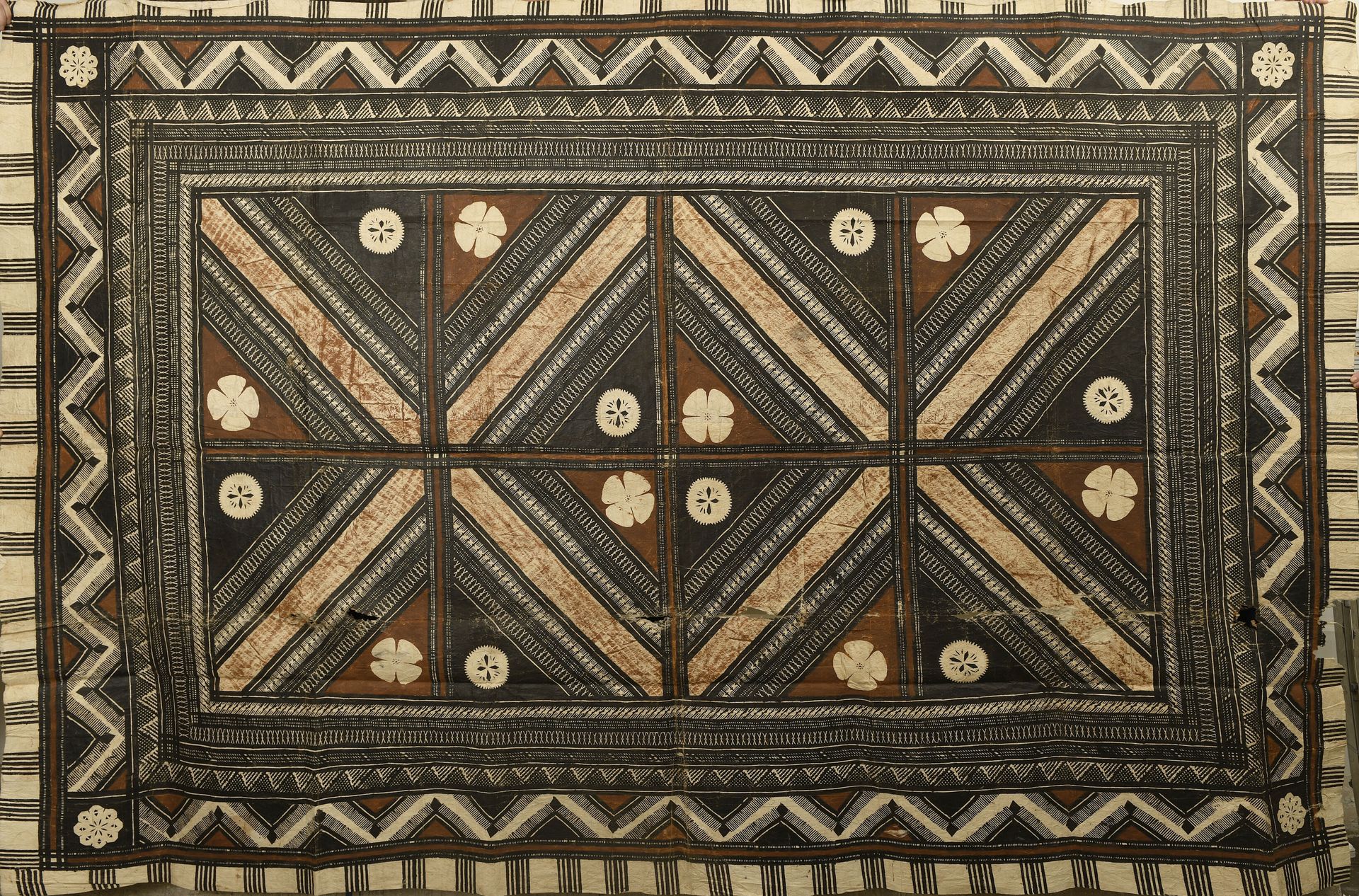Description
Tapa Masi kesa, Fiji Archipelago Mid 20th century Chinese mulberry tree (Broussonetia papyrifera), vegetable dyes L. 285 cm l. 186 cm Provenance: Private collection, New Caledonia Masi (formerly maro), refers to the tapa in Fiji, a kesa corresponding to the reddish-brown color obtained from the bark of various species of mangrove trees (rhizophora). Fiji's masi kesas have particular patterns, each with its own symbolism and meaning. Contrary to the archipelagos where the patterns are applied freehand or with a die, Fijian masi kesas use stencils. On this example are represented flowers of Barringtonia, a pattern called vutu, from this flower was extracted a particular essence playing an essential role in the Fijian culture of preserving food and especially fish. The seeds of barringtonia, reduced to a powder and spread in the water, were used to poison the fish while preserving the quality and flavor of their flesh. Rectangular in shape, this masi kesa presents a series of friezes decorated differently, successively, with stripes, jagged and triangular motifs, concentrating the gaze, detail after detail, on the center of the fabric, which is divided into eight squares divided diagonally by thick lines, each bearing flowery motifs on two of its corners. Fineness of the detail and rhythm of the motives.
158
Tapa Masi kesa, Fiji Archipelago Mid 20th century Chinese mulberry tree (Broussonetia papyrifera), vegetable dyes L. 285 cm l. 186 cm Provenance: Private collection, New Caledonia Masi (formerly maro), refers to the tapa in Fiji, a kesa corresponding to the reddish-brown color obtained from the bark of various species of mangrove trees (rhizophora). Fiji's masi kesas have particular patterns, each with its own symbolism and meaning. Contrary to the archipelagos where the patterns are applied freehand or with a die, Fijian masi kesas use stencils. On this example are represented flowers of Barringtonia, a pattern called vutu, from this flower was extracted a particular essence playing an essential role in the Fijian culture of preserving food and especially fish. The seeds of barringtonia, reduced to a powder and spread in the water, were used to poison the fish while preserving the quality and flavor of their flesh. Rectangular in shape, this masi kesa presents a series of friezes decorated differently, successively, with stripes, jagged and triangular motifs, concentrating the gaze, detail after detail, on the center of the fabric, which is divided into eight squares divided diagonally by thick lines, each bearing flowery motifs on two of its corners. Fineness of the detail and rhythm of the motives.
